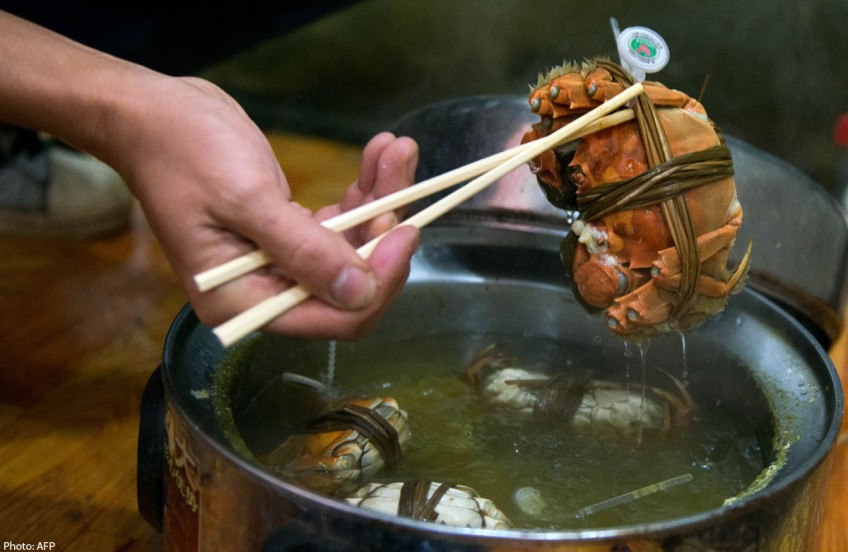Time to grab some hairy crab

SINGAPORE - We are midway through the hairy crab season, and now is supposedly the best time to indulge in this pricey delicacy.
November is a great time to eat female crabs because the quality of the roe is at its peak.
Hairy crab can be prepared in many ways. Steaming remains a favourite. Still, the big-name restaurants here like to get creative and jazz the dishes up:
Peony Jade @ Keppel Club's steamed hairy crab with homemade Chinese rice wine ($48) may be a steamed dish, but the soup that comes with the crab gives this menu item a different twist.

The wine is sweet and spicy with grated ginger, ginger juice and wood ear fungus.
These ingredients claims to boost your blood circulation too.
Call +65 6276-9138 for reservations.
At Royal Pavilion (Park Regis Singapore), the crab is steamed with egg white and Chinese wine ($68).

Prepared this way, the all-important roe is on full display. You can also look forward to the crab being shelled for you.
Another interesting dish here is the flambe hairy crab with sea salt served in claypot ($68).
Call +65 6818-8851 for reservations.
Count on Li Bai Cantonese Restaurant at Sheraton Towers Singapore to do something special with hairy crab.

This year, they are cooking it with braised bird's nest ($88).
The delicate bird's nest complements the creamy roe perfectly in this luxe combination.
Call +65 6839-5623 for reservations
weeteck@sph.com.sg
Fun Facts about Hairy Crabs

This article was first published on October 29, 2014.
Get The New Paper for more stories.